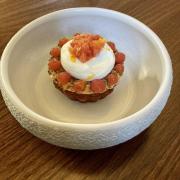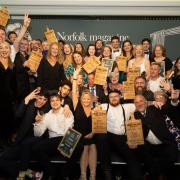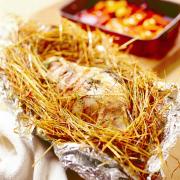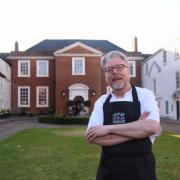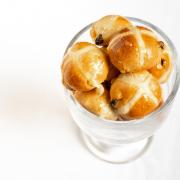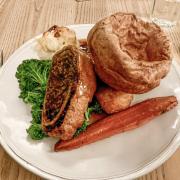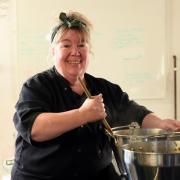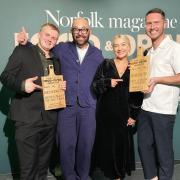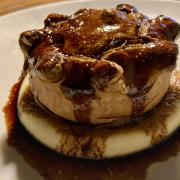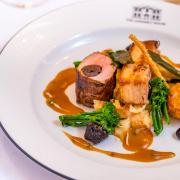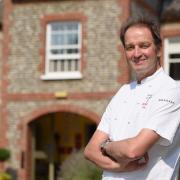Mark Nicholls reflects on good table manners over the ages and where they are heading in the 21st century.
Manners maketh man
In an age where the knife seems to be disappearing from the table and manners and etiquette forgotten, Mark Nicholls reflects on good table manners over the ages and where they are heading in the 21st century.
Illustrations: Peter Lubach
1 Manners Maketh Man. Was it not The Bard who coined that one?
Funnily enough, that’s not one of William Shakespeare’s phrases. There is a number of suggestions as to its origins: manners expert Anita Carpenter, who gives lunch lectures on the subject, suggests that it was made popular by a Scot called Alexander Barclay who became a monk in Ely in 1511. However, William of Wykeham (1324-1404), Bishop of Winchester and Chancellor of England, was keen on good manners and adopted the phrase “manners maketh man” as his motto.
2 Did I hear another medieval bishop also advocated good manners?
Bishop of Lincoln Robert Grosseteste studied manners as he climbed the social ladder after his humble birth in 1175 at Stradbroke, Suffolk. Ambitious and anxious to join the nobility, Grosseteste insisted on good manners at table and in his establishment and was an early author of several treatises about household management and etiquette.
3 What about the Romans? They taught us a lot so how were they as diners? Apparently they were partial to a serviette or two. The Romans were particularly clean diners and among the first – if not the first – to use napkins and not one, but two. At a Roman banquet diners expected to have two napkins available for their use; one for the hands and another for the garment.
4 How were people taught good manners?
Long before finishing schools and etiquette courses, good old-fashioned verse and poetry were the answer. Whether at the table or in the street, writer John Lydgate tells us, “walk sedately when visiting town, show you are a wise man, not a clown”. Lydgate also warns us not to speak through mouthfuls and not to emit unpleasant noises at the table in his work Stans Puer Ad Mensam (Table Manners for Children). Equally, in his poem of the same name, Sir Walter Raleigh advises:“Eat slowly: only men in rags And gluttons old in sin Mistake themselves for carpet bags And tumble victuals in.”
5 As children, we were always taught to clear our plates, is that polite?
Not according to Anita Carpenter. At the end of the meal, leftovers were collected for the servants. It was considered good manners to leave something for those of a lower position and often a bowl was sent round to collect these leftovers. There was also another popular phrase – “leave something for the Duke of Rutland”. The dukes came from the Manners family – ie “remember your Manners”.
6 Henry VIII must have been a sloppy eater, throwing his chicken bones to the dogs?
Well, not really – that is “pure Hollywood”. The Tudor nobles knew how to dine. While there was little evidence of a fork in England in the Middle Ages, table etiquette did consist of more than carving food with your dagger. In fact, there were up to four different types of knife for different meats and foods and correct etiquette on how to use these was strictly observed at the higher class tables.
7 Was it okay for people to put the knife in their mouth?
Certainly not! And it was nothing to do with running the risk of cutting your tongue either. Most of the food was placed in a communal dish in the Middle Ages, known as a “mess”, later adapted as Officers’ Mess, Sergeants’ Mess in military circles. As the knife would be dipped into that communal dish, it was considered the height of bad manners to be seen to be licking your knife.
8 So where did all the forks come from?
Forks arrived in England from Italy in the 17th century. When Catherine de Medici married Henry I in 1533, her dowry included several dozen silver dinner forks and they grew in popularity as the Italians renewed their interest in table cleanliness. The fashion spread across Europe – except in France where the fork was considered a dangerous utensil with Louis XIV continuing to eat with his fingers – and across the English Channel. The modern table setting is attributed to Charles I of England who in 1633 declared “it is decent to use a fork”, a statement that heralded the beginning of civilised table manners. It was decades before the fork gained acceptance among the lower classes but in the 19th century they were commonplace. The first to use the fork on his coat of arms was that “man of Manners”, the Duke of Rutland in 1632.
9 From four knives in the Middle Ages to one (or fewer) today. Where have all the knives gone?
Earlier this year, department store Debenhams launched a Civilised Dining campaign to protect the traditional British way of eating after it emerged that proper dining etiquette was disappearing fast. Figures from its 155 stores revealed a US-style trend of eating with “fork-only” in British households, backed by figures that showed main meal forks were outselling its matching knives by almost two to one – and three to one in London stores. The blame was laid at the increasing popularity of fast food, pre-cut pizzas and chips – all dishes where a knife is not required.
10 Is the American “fork-only” style a modern facet of dining?
Not according to the New York Ladies’ Indispensable Assistant of 1852, which gave general advice on eating with a fork, knife and spoon: “If silver or wide pronged forks are used, (for fish), eat with the fish fork in the right hand – the knife is unnecessary.” So now you know who to blame.
11 But why did Debenhams feel it was important to act?
Its spokesman Ed Watson summed it up: “Bad table manners can turn an enjoyable meal into an embarrassment. Using both a knife and a fork to eat has held this country in good stead for centuries – it’s one of the mainstays of being British. It’s all about maintaining standards, so we want to act now before the single fork habit becomes ingrained in the next generation.” So, there are still champions of good table manners out there.
12 And it appears they are needed:
Alarming research has revealed that 24pc of Britons are baffled by place settings, 28pc did not possess fish knives, 19pc could not tell the difference between soup spoons and dessert spoons and 41pc did not realise that the safest and well-mannered way to eat soup was to push the spoon away from you as you ate. Debrett’s etiquette adviser Jo Bryant said good table manners should be second nature: “When dining, it is essential to remember your manners and to use cutlery correctly. Bad table manners may offend your fellow diners and cause embarrassment.”
Anita Carpenter, who lives near King’s Lynn, is a regular speaker for the National Trust and included among her discourses is a lunch lecture entitled Manners Maketh Man: Table Manners and Etiquette Through the Ages. Others include Putting a House to Bed, National Trust Properties in East Anglia and The History of the National Trust – the first 100 years.



